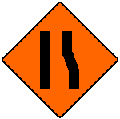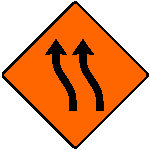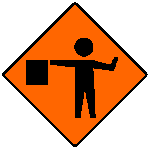To avoid New York State Thruway accidents, follow these twelve safety tips.

1. New York’s Move Over Law
- As soon as you see lights, vests or reflectors, check traffic around you, SLOW DOWN and MOVE OVER if safe to do so.
- Drivers MUST use due care when approaching an emergency vehicle or hazard vehicle including police vehicles, fire trucks, ambulances, construction and maintenance vehicles and tow trucks.
- The Move Over Law applies to both sides of the roadway, not just the shoulder on the right.
2. Buckle Up New York
Protect yourself and your passengers by using seat belts at all times. New York State law requires:
- All front seat occupants must wear seat belts. (if the front seat passenger is under the age of 16, it is the driver’s responsibility to ensure that the passenger is buckled up.) New York State Vehicle & Traffic Law
- Children from birth through age eight are required to ride in an appropriate child restraint system.
3. Rules of the Road
- Buckle Up – it’s the law.
- No U-Turns.
- No stop or park in the travel lanes or medians.
- Always Signal Your Intentions.
- Don’t use your hand-held cell phone while driving, as mandated by law.
- Keep to the Right – use the left lane only to pass.
- Don’t tailgate.
- Adjust speed to conditions.
- Stay awake, alert, and never drink and drive.
- Be watchful for deer.
- Don’t pick up Hitchhikers.
4. Air Bag Precautions
- Never place a rear-facing infant safety seat in the front seat of a vehicle equipped with air bags.
- Children 12 and under should always ride in the back seat wearing seat belts.
- All passengers, regardless of age or seating position, should buckle up.
- Small, pregnant and older adults seated in front seats should sit as far away from the steering wheel or dashboard as comfortably possible. Also, steering wheels should be held on the sides and tilt steering wheels should be adjusted down, toward the chest.
5. Use Caution in Work Zones
Be aware of maintenance vehicles and warning signs signaling maintenance or construction zones on the highway and reduce your speed as signs indicate. Workers are there to improve the highway for your future trips, so don’t risk your life or theirs by traveling at excessive speed through work zones. Motorists are reminded that speeding fines are doubled in work zones.
Travelers should be prepared to reduce speeds and drive alert when passing through construction zones. Recognizing and understanding the orange-and-black signs found in construction zones is essential to a safe trip.

This indicates a lane merge ahead. Leave time to merge safely and be courteous by letting other drivers merge.

This indicates a lane shift. Reduce speeds and be prepared to steer through curves and for narrower travel lanes through the area.

This means a flag person ahead will be stopping or slowing traffic. Be prepared to stop!
Always keep in mind that construction zones can be busy places, with people and equipment on the move. Work is routinely performed very close to passing traffic. Drifting from the lane, even for a split second, could be dangerous.
- As soon as you see lights, vests or reflectors, check traffic around you, SLOW DOWN and MOVE OVER if safe to do so.
- Drivers MUST use due care when approaching an emergency vehicle or hazard vehicle including police vehicles, fire trucks, ambulances, construction and maintenance vehicles and tow trucks.
- The Move Over Law applies to both sides of the roadway, not just the shoulder on the right.
Obey the posted speed limits in these areas and remember that speeding fines are doubled in work zones.
6. Don’t Tailgate
It is dangerous and illegal to drive too closely to the vehicle ahead of you. To provide enough space between you and the vehicle ahead of you, use the “three-second rule.” Choose an object near or above the road ahead, such as a sign, tree or overpass. As the vehicle ahead passes it, count aloud slowly: “One thousand one, one thousand two, and one thousand three.” If you reach the object before you finish counting, you are following too closely. When weather, driving conditions or visibility is poor, increase the count to four or five seconds to allow for more time.
7. Keep to the Right
If vehicles accumulate behind you while you are traveling in the left (passing) lane, safely move into the right lane and permit faster-moving vehicles to pass.
8. Signal Your Intentions
Change lanes carefully and always use directional signals to indicate intentions to the drivers around you.
9.Look Behind You
Check your rear-view mirrors frequently for fellow motorists. But remember, mirrors have blind spots, so check carefully before changing lanes.
10. Use Headlights
Whenever weather or other conditions limit visibility to 1,000 feet or less, or when windshield wipers are on, turn on headlights.
11. Don’t Drive When Drowsy
It is advisable to take frequent safety breaks at one of the 27 Travel Plazas along the highway.
12. Be Mindful of Deer Crossing
Be watchful for deer, especially during May-June and October-November.
- Be alert for deer along the highway, especially at sunrise and sunset during the spring and fall. Scan the shoulders of the road for light that is reflected in deer eyes.
- Slow down if you see deer along the highway or ahead of you
- If you see one deer cross the highway, expect that additional deer are close by and could follow
- Do not rely on high beams or using your horn to warn deer
If you cannot avoid a collision with a deer:
- Do not swerve to avoid the deer. The most serious collisions occur when drivers swerve at highway speeds
- Firmly apply your brake, hold onto the steering wheel, and bring your vehicle to a controlled stop
- Do not touch the deer
- Report the accident by calling the Thruway Authority emergency telephone number (1-800-842-2233)or 911.
Contact NYS Thruway Accident Lawyers Robert Friedman and Michael Ranzenhofer at (585) 484-7432 who have these unique qualifications to assist you or your family members as a victim of a NYS Thruway car, truck and bus crashes:
- NYS Thruway Accident Lawyer Robert Friedman has successfully prosecuted thousands of dangerous NYS Thruway drivers as a prosecutor.
- NYS Thruway Accident Lawyer Michael Ranzenhofer Rochester Attorney, as a NY State Senator, oversaw NY state legislation regarding the NYS Thruway Authority as chairman of the NY Senate Corporations, Authorities and Commissions Committee, and was a member of the Transportation Committee.
- NYS Thruway Accident Lawyers Michael Ranzenhofer and Robert Friedman have offices across the state of New York, including Rochester, Rochester, Syracuse, Albany, New Rochelle and Queens.
